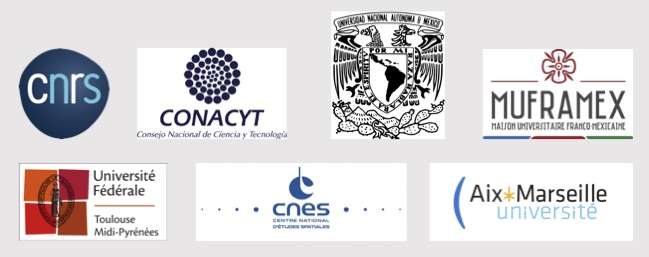First workshop of the Mexican-French LIA ERIDANUS
Toulouse
France and Mexico have a long history of close relations in Science and particularly in Astronomy. This collaboration recently led to the decision to jointly develop and operate a robotic telescope, called "Colibrí", to be installed at the National Astronomical Observatory in San Pedro Mártir, Baja California. This telescope, with a diameter of 1.3 m and a field of view of 26', will eventually be equipped with two visible cameras and an infrared camera (see here for their sensitivity). Scheduled to be operational from 2021, it is specially designed for the study of the variable sky, doing visible-infrared photometry of optical transients, in particular within the framework of the Franco-Chinese SVOM mission.
In order to deepen their relationship, Mexico and France have created an Associate International Laboratory (LIA) called ERIDANUS. Its objective is to encourage the emergence of new collaborations or to strengthen existing ones around themes ranging from the observation of exoplanets to the exploration of the transient sky, the development of new instruments and the study of the interstellar medium. The LIA is officially endorsed and funded by the CNRS, CNES and AMU in France, and the UNAM and CONACyT in Mexico.
ERIDANUS began on 1 January 2019 and the first meeting will take place from Monday 3 to Thursday 6 June 2018, hosted by the Maison Universitaire Franco-Mexicaine in Toulouse.
Please note that the workshop will take place at the premises of the Université Fédérale de Toulouse in the city center (see the address at the bottom of the page).

This workshop is sponsored by: CNRS - CNES - Toulouse University and the MuFraMex in France, and by the CONACyT and the UNAM in Mexico.

